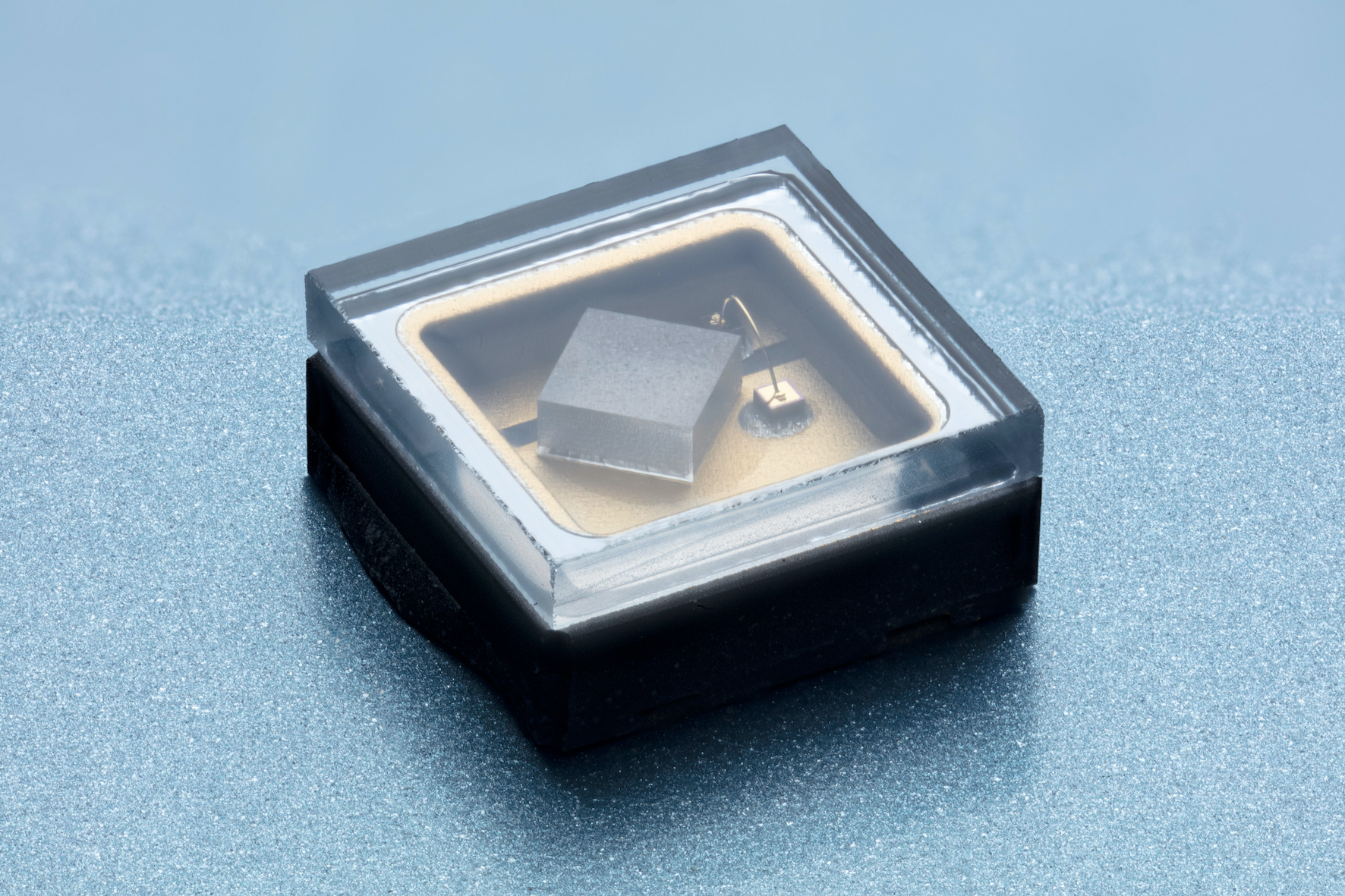FBH presents advances in UV LEDs at ICULTA

In collaboration with TU Berlin, FBH has increased lifetimes of UVB LEDs and certain UVC LEDs to more than 10,000 hours
The Ferdinand-Braun-Institut (FBH) is presenting current research results about reliability of its UVB and UVC LEDs at the virtual ICULTA 2021f from April 19 to 20, 2021. FBH will also show irradiation systems that are already being tested in medical applications, for example, to combat multi-resistant pathogens on the skin.
Up to now, the lifetime of state-of-the-art UVB and UVC LEDs has been limited to several thousand hours. At ICULTA, FBH presents a new understanding of degradation processes of UV LEDs.
The degradation behaviour was analysed under different operating conditions, for different LED designs and material compositions. Based on the gained knowledge, FBH has derived a model for the physical degradation processes of UV LEDs. In collaboration with the TU Berlin, FBH has succeeded in increasing the lifetime of UVB LEDs and certain UVC LEDs to more than 10,000 hours – an important progress to ensure that the devices can be used in future commercial products.
FBH offers customised UV LEDs with specific wavelengths in the UVB and UVC spectral range. The portfolio also comprises customised packages that, for example, have monolithically integrated ESD protection or are equipped with micro-optics to adjust the emission angle.
UVC light inactivates viruses, bacteria and fungi. FBH is developing the required LEDs jointly with TU Berlin, covering the entire value chain from semiconductor technology to ready-to-use prototypes. Its LEDs emit in the far-UVC spectral range at 233 nm. Light of this wavelength offers the decisive advantage that it hardly penetrates the living layers of the skin.
The Ferdinand-Braun-Institut has developed and manufactured several UV LED irradiation systems using 233 nm LEDs. These are being tested in medical studies at the Charité - Universitätsmedizin Berlin and the Universitätsmedizin Greifswald. An array of 120 LEDs is integrated into each of the systems on an area of 8 cm x 8 cm. This achieves a maximum irradiance of 0.17 mW/cm2 with more than 90 percent uniformity over an area of 6 cm x 6 cm.
Another prototype with 265 nm LEDs was specifically developed to disinfect everyday objects such as mobile phones and reusable masks. The demonstrator comprises 128 LEDs that irradiate the respective object, which lies on a UV-transparent glass pane, from both sides. The average irradiance is more than 1 mW/cm2.


































